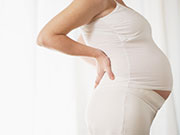Shorter anogenital distance has been linked to infertility and low sperm count
THURSDAY, Feb. 19, 2015 (HealthDay News) — When expectant mothers are exposed to phthalates during the first trimester, their male offspring may have a greater risk of infertility later in life, a new study suggests. The report was published online Feb. 18 in Human Reproduction.
Boys exposed to the chemical diethylhexyl phthalate (DEHP) may be born with a significantly shorter anogenital distance than those not exposed to these chemicals. A shorter anogenital distance has been linked to infertility and low sperm count, the researchers explained. “We saw these changes even though moms’ exposure to DEHP has dropped 50 percent in the past 10 years,” lead researcher Shanna Swan, Ph.D., a professor of preventive medicine and obstetrics, gynecology, and reproductive medicine at the Icahn School of Medicine at Mount Sinai in New York City, told HealthDay. “Therefore, we have not found a safe level of phthalate exposure for pregnant women,” she contended.
For the study, Swan’s team collected data on 753 pregnant women and their infants. Specifically, the researchers found that exposure in the womb to three types of DEHP was associated with a significantly shorter anogenital distance in boys, but not in girls.
In a statement, the American Chemistry Council (ACC) stressed that the study only examined one type of phthalate, not all versions of the chemical. And it said that phthalates are “one of the most widely studied family of chemicals in use today.” The ACC added that DEHP “is known to break down into its metabolites within minutes after it enters the body. Information collected by the U.S. Centers for Disease Control and Prevention over the last 10 years indicates that, despite the fact that phthalates are used in many products, exposure from all sources combined is extremely low — much lower than the levels established as safe by scientists at regulatory agencies.”
Copyright © 2015 HealthDay. All rights reserved.








